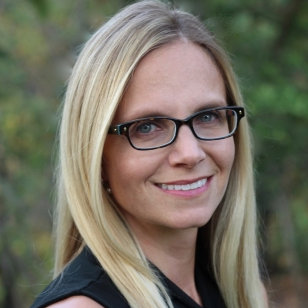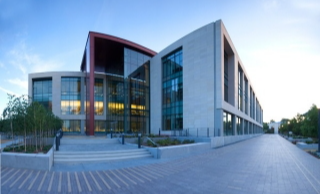Research Area
We are interested in elucidating tumor evolutionary dynamics, novel therapeutic targets, and the genotype to phenotype map in cancer. A unifying theme of our research is to exploit ‘omic’ data derived from clinically annotated samples in robust computational frameworks coupled with iterative experimental validation in order to advance our understanding of cancer systems biology. In particular, we employ advanced genomic techniques, computational and mathematical modeling, and powerful model systems in order to: 1) Model the evolutionary dynamics of tumor initiation, progression and therapeutic resistance 2) Elucidate disease etiology and novel molecular targets through integrative analyses of high-throughput omic data 3) Develop techniques for the systems-level interpretation of genotype-phenotype associations in cancer
Team Description
The Curtis laboratory is focused on the development and application of innovative experimental, computational and AI approaches to improve the diagnosis, treatment and early detection of cancer.
Team Members
Team Show
Publications
1)Germline-mediated immunoediting sculpts breast cancer subtypes and metastatic proclivity. Houlahan KE, Khan A, Greenwald NF, West RB, Angelo M, Curtis C. bioRxiv. 2023 Mar 16:2023.03.15.532870. doi:10.1101/2023.03.15.532870.
2)Development and characterization of new patient-derived xenograft (PDX) models of osteosarcoma with distinct metastatic capacities. Schott CR, Koehne AL, Sayles LC, Young EP, Luck C, Yu K, Lee AG, Breese MR, Leung SG, Xu H, Shah AT, Liu HY, Spillinger A, Behroozfard IH, Marini KD, Dinh PT, Pons Ventura MAV, Vanderboon EN, Hazard FK, Cho SJ, Avedian RS, Mohler DG, Zimel M, Wustrack R, Curtis C, Sirota M, Sweet-Cordero EA.bioRxiv. 2023 Jan 20:2023.01.19.524562. doi: 10.1101/2023.01.19.524562.
3)Karlsson K, Przybilla M, Kotler E, Khan A, Xu H, Karagyozova K, Sockell A, Wong WH, Liu K, Mah A, Lo YH, Lu B, Houlahan KE, , Ma Z, Suarez CJ, Barnes CP, Kuo CJ, Curtis C. Deterministic evolution and stringent selection during pre-neoplasia. Biorxiv. doi: 10.1101/2022.04.09.487529v3.
4)Sockell A, Wong W, Longwell S, Vu T, Karlsson K, Mokhtari D, Schaepe J, Lo YH, Cornelius V, Kuo C, Van Valen D, Curtis C+, Fordyce PM+. A microwell platform for high-throughput longitudinal phenotyping and selective retrieval of organoids.
doi: https://doi.org/10.1101/2022.11.01.514733
5)LeSavage BL, Gilchrist AE , Krajina BA, Karlsson K, Smith AR , Karagyozova K , Klett KC , Curtis C, Kuo CJ, Heilshorn SJ. Engineered extracellular matrices reveal stiffness-mediated chemoresistance in patient derived pancreatic cancer organoids. Biorxiv. doi: 10.1101/2022.04.22.488943v1.
6)Becker WR, Nevins SA, Chen DC, Chiu R, Horning AM, Guha TK, Laquindanum R, Mills M, Chaib H, Ladabaum U, Longacre T, Shen J, Esplin ED, Kundaje A, Ford JM, Curtis C, Snyder MP, Greenleaf WJ. Single-cell analyses define a continuum of cell state and composition changes in the malignant transformation of polyps to colorectal cancer. Nat Genet. 2022 Jul;54(7):985-995. doi: 10.1038/s41588-022-01088-x. Epub 2022 Jun 20.
7)Hung KL, Luebeck J, Dehkordi SR, Colón CI, Li R, Wong IT, Coruh C, Dharanipragada P, Lomeli SH, Weiser NE, Moriceau G, Zhang X, Bailey C, Houlahan KE, Yang W, González RC, Swanton C, Curtis C, Jamal-Hanjani M, Henssen AG, Law JA, Greenleaf WJ, Lo RS, Mischel PS, Bafna V, Chang HY. Targeted profiling of human extrachromosomal DNA by CRISPR-CATCH. Nat Genet. 2022 Nov;54(11):1746-1754. doi: 10.1038/s41588-022-01190-0. Epub 2022.
8)Strand, S. H., Rivero-Gutierrez, B., Houlahan, K. E., Seoane, J. A., King, L. M., Risom, T., Simpson, L. A., Vennam, S., Khan, A., Cisneros, L., Hardman, T., Harmon, B., Couch, F., Gallagher, K., Kilgore, M., Wei, S., DeMichele, A., King, T., McAuliffe, P. F., Nangia, J., Lee, J., Tseng, J., Storniolo, A. M., Thompson, A. M., Gupta, G. P., Burns, R., Veis, D. J., DeSchryver, K., Zhu, C., Matusiak, M., Wang, J., Zhu, S. X., Tappenden, J., Ding, D. Y., Zhang, D., Luo, J., Jiang, S., Varma, S., Anderson, L., Straub, C., Srivastava, S., Curtis, C., Tibshirani, R., Angelo, R. M., Hall, A., Owzar, K., Polyak, K., Maley, C., Marks, J. R., Colditz, G. A., Hwang, E. S., West, R. B. Molecular classification and biomarkers of clinical outcome in breast ductal carcinoma in situ: Analysis of TBCRC 038 and RAHBT cohorts. Cancer Cell S1535-6108(22)00512-8. doi: 10.1016/j.ccell.2022.10.021. 2022[link: https://pubmed.ncbi.nlm.nih.gov/36400020/]
9)Nobre AR, Dalla E, Yang J, Huang X, Wullkopf L, Risson E, Razghandi P, Anton ML, Zheng W, Seoane JA, Curtis C, Kenigsberg E, Wang J, Aguirre-Ghiso JA. ZFP281 drives a mesenchymal-like dormancy program in early disseminated breast cancer cells that prevents metastatic outgrowth in the lung. Nat Cancer. 2022 Oct;3(10):1165-1180. doi: 10.1038/s43018-022-00424-8.
10)Tilk S, Tkachenko S, Curtis C, Petrov DA, McFarland CD. Most cancers carry a substantial deleterious load due to Hill-Robertson interference. Elife. 2022 Sep 1;11:e67790. doi: 10.7554/eLife.67790.
11)Wong WH, Curtis C. "Fateful" encounter: Lineage tracing meets phylogeny to unravel mysteries of cancer progression.Dev Cell. 2022 Jul 25;57(14):1680-1682. doi: 10.1016/j.devcel.2022.07.002.
12)Lee JV, Housley F, Yau C, Nakagawa R, Winkler J, Anttila JM, Munne PM, Savelius M, Houlahan KE, Van de Mark D, Hemmati G, Hernandez GA, Zhang Y, Samson S, Baas C, Esserman LJ, van 't Veer LJ, Rugo HS, Curtis C, Klefström J, Matloubian M, Goga A.Combinatorial immunotherapies overcome MYC-driven immune evasion in triple negative breast cancer. Nat Commun. 2022 Jun 27;13(1):3671. doi: 10.1038/s41467-022-31238-y.
13)Parikh DA, Kody L, Brain S, Heditsian D, Lee V, Curtis C, Karin MR, Wapnir IL, Patel MI, Sledge GW Jr, Caswell-Jin JL. Patient perspectives on window of opportunity clinical trials in early-stage breast cancer. Breast Cancer Res Treat. 2022 Jul;194(1):171-178. doi: 10.1007/s10549-022-06611-6. Epub 2022 May 11.
14)Raj N, Wang M, Seoane JA, Zhao RL, Kaiser AM, Moonie NA, Demeter J, Boutelle AM, Kerr CH, Mulligan AS, Moffatt C, Zeng SX, Lu H, Barna M, Curtis C, Chang HY, Jackson PK, Attardi LD. The Mettl3 epitranscriptomic writer amplifies p53 stress responses. Mol Cell. 2022 Jul 7;82(13):2370-2384.e10. doi: 10.1016/j.molcel.2022.04.010. Epub 2022 May 4.
15)Schapiro D, Yapp C, Sokolov A, Reynolds SM, Chen YA, Sudar D, Xie Y, Muhlich J, Arias-Camison R, Arena S, Taylor AJ, Nikolov M, Tyler M, Lin JR, Burlingame EA; Human Tumor Atlas Network, Chang YH, Farhi SL, Thorsson V, Venkatamohan N, Drewes JL, Pe'er D, Gutman DA, Herrmann MD, Gehlenborg N, Bankhead P, Roland JT, Herndon JM, Snyder MP, Angelo M, Nolan G, Swedlow JR, Schultz N, Merrick DT, Mazzili SA, Cerami E, Rodig SJ, Santagata S, Sorger PK. MITI minimum information guidelines for highly multiplexed tissue images. Nat Methods. 2022 Mar;19(3):262-267. doi: 10.1038/s41592-022-01415-4.
16)Salahudeen AA, Yuki K, Seoane JA, Mah AT, Smith AR, Kolahi K, De la O SM, Hart DJ, Ding J, Ma Z, Barkal S, Navika D. Shukla, Zhang Z, Cantrell MA, Batish A, Usui T, Root D, Hahn W, Curtis C, Kuo CJ. Pan-cancer organoid validation of tumor outlier chromosomal amplification events. Biorxiv. doi:10.1101/2021.10.05.463147.
17)McNamara K, Caswell-Jin JL, Ma Z, Joshi R, Kotler E, Bean G, Kriner M, Zhou Z, Hoang M, Beechem J, Zoeller J, Press MF, Slamon D, Hurvitz S & Curtis C. Spatial proteomic characterization of HER2-positive breast tumors through neoadjuvant therapy predicts response. Nature Cancer. doi:10.1038/s43018-021-00190-z, 2021.
18)Caswell-Jin JL, Lorenz C, Curtis C. Molecular heterogeneity and evolution in breast cancer. Annual Reviews in Cancer Biology (5) 2021. doi:10.1146/annurev-cancerbio-060220-014137.
19)Nederof I, Horlings HM, Curtis C, Kok M. A high-dimensional window into the microenvironment of triple negative breast cancer. Cancers (Basel) 13(2): E16. doi:10.3390/cancers13020316. PMID: 33467084.
20)Lo YH, Kolahi KS, Du Y, Chang CY, Krokhotin A, Nair A, Sobba WD, Karlsson K, Jones SJ, Longacre TA, Mah AT, Tercan B, Sockell A, Xu H, Seoane JA, Chen J, Shmulevich I, Weissman JS, Curtis C, Califano A, Fu H, Crabtree GR, Kuo CJ. A CRISPR/Cas9-engineered ARID1A-deficient human gastric cancer organoid model reveals essential and non-essential modes of oncogenic transformation. Cancer Discovery, 2021 Jan 15;candisc.1109.2020. doi:10.1158/2159-8290.CD-20-1109.
21)Caswell-Jin JL and Curtis C. Androgen receptor agonists as breast cancer therapeutics. Nature Medicine, 2021. doi:10.1038/s41591-021-01242-8.

